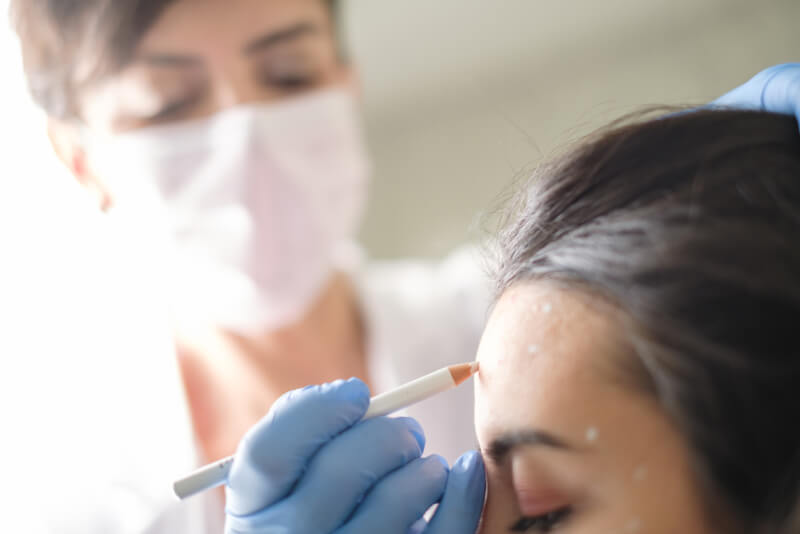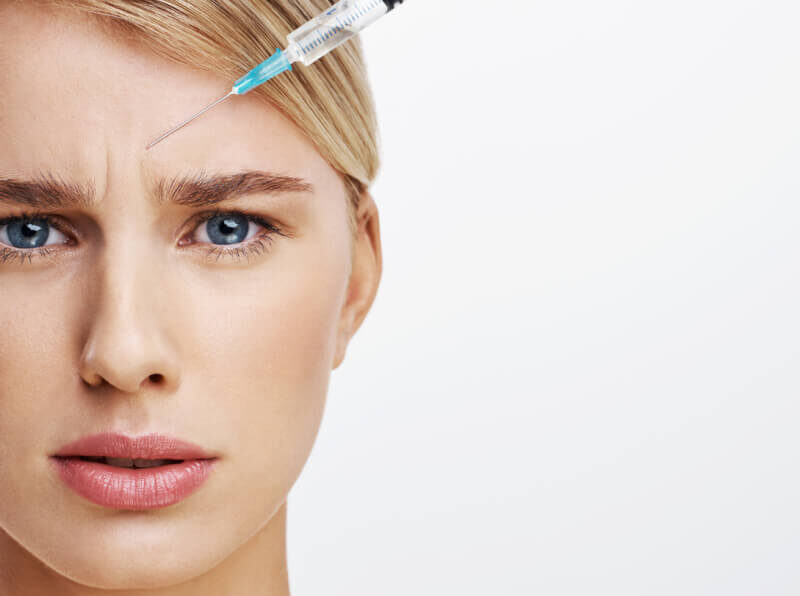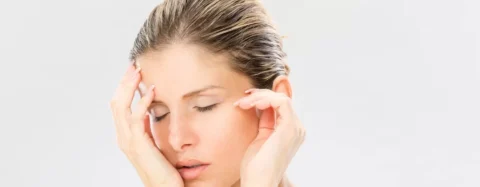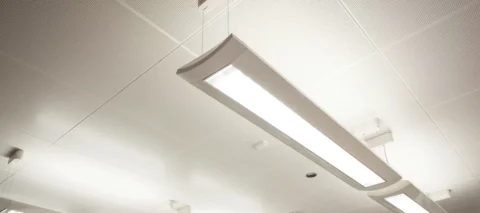First introduced in the market in 1989, Botox (also known as Botulinum toxin) has cemented its place as the most in-demand wonder drug that helps men and women fight back time and remain youthful as ever. Today, it’s one of the most prominent clinical treatments globally, with cosmetic and therapeutic applications. But as with any injection to the skin, there are risks associated with Botox.
What are the side effects of Botox? While it’s a very safe cosmetic procedure with a reasonably low complication rate if administered by a professional practitioner, there are still chances that you could experience bad reactions. If you decide to treat your forehead, which is typically the first place that you begin to see wrinkles as you age, it’s beneficial to learn more about what to expect after your treatment.
What Are the Side Effects of Botox on Forehead?
1. Bruising
Any injection can lead to bruising and swelling at the site where the needle is inserted, so it’s only natural that Botox injection has the potential to cause this adverse effect. An experienced practitioner or plastic surgeon will know the best and safest methods to prevent bruising. They can also give you proper guidance and Botox aftercare to treat any bruising developed after your treatment. If you treat your forehead to target facial wrinkles, particularly forehead lines, the area may be a bit red and swollen after the treatment. These symptoms should go away after a few days if they occur. It would help if you stopped taking drugs that have blood-thinning properties before your treatment to discourage the chances of bruising. You would want to avoid any medication or supplement containing aspirin, heparin, ginseng, garlic, or fish oil.
2. Pain at the Injection Site
While a botulinum toxin injection isn’t particularly painful for most people, some will feel mild pain at the injection site. This is a common effect and can be minimized by topical numbing creams. The pain inflicted by the injection depends on your skin and the skill of the botox injector.
3. Bleeding
Similar to bruising, slight bleeding may occur after your Botox treatment. When the needle is injected into your skin, it can cut a tiny capillary or vein, causing blood to flow out of the injection spot. This bleeding should be minor. You may expect it to stop after a while. The likelihood of bleeding depends on the injector’s experience and skill level and may also occur if you’re especially prone to bleeding.
4. Headache
Some patients tend to experience a mild headache following a Botox injection in the forehead. Experts theorize that this is often caused by accidental bumping of the frontal bone of the forehead or over-contraction of specific facial muscles. This side effect can last a few hours up to a few days and can be treated with an over-the-counter (OTC) medication such as acetaminophen. However, a 2001 study showed that about 1 percent of patients who underwent a Botox treatment might suffer from severe headaches that can last for two weeks to one month before slowly disappearing.
5. Flu-Like Symptoms
Some people may feel flu-like symptoms after having been administered Botox for treatments of forehead wrinkles. These symptoms usually arise within the first few days to the first month after a Botox treatment and are described as mild to moderate. These reactions can be characterized as an upper respiratory tract infection associated with fever and fatigue. These symptoms can be easily treated by resting, drinking plenty of water, taking acetaminophen for aches and fever, using a humidifier, or a steamy bath. Keep in mind that you must relay the symptoms to the practitioner who assisted you before taking any medications following your procedure.
6. Upset Stomach
Some of the risks of a Botox cosmetic procedure are upset stomach, nausea, or constipation. However, symptoms usually last a few days up to two weeks and are reported as mild or moderate. As these effects are manageable, treatments are simple:
- Increasing your fruit and vegetable intake.
- Drinking ginger tea to soothe your stomach.
- Eating bland and low-fat foods.
- Taking a fiber supplement.
- Taking a warm bath.
- Doing some light exercises at least thrice a week.
7. Dry Mouth
After a Botox cosmetic surgery, you may find that your mouth feels dry. This is a common side effect and usually passes within a few days. If you see that your mouth feels sticky or dry, your saliva is thick or stringy, or your throat feels hoarse or dry, and you have trouble swallowing, you’re suffering from a dry mouth. To relieve this feeling, sip some water, have sugarless candy or sugar-free gum, use alcohol-free mouthwash, and refrain from breathing through your mouth.
8. Dysphagia
Dysphagia or trouble swallowing is one of the potential side effects of Botox injection on the forehead. It can occur even if the most skilled practitioner administered the injection to you. It’s because while a given dose may not be enough for one patient, it can be too excessive for others. This may cause toxins to spread to the muscles next to the injection site. This side effect usually appears within 2 to 10 days of treatment, but it almost always resolves itself.
You should inform your physician of the exact symptoms you’re experiencing so he can adjust future doses. For example, if you experience dysphagia, consider taking tiny mouthfuls of food, chewing thoroughly, and drinking a glass of water to wash food down. And try eating only softer foods for a while. If you struggle to swallow fluids, try using a straw while drinking. If food or drink frequently enters the windpipe, it could end up in your lungs and cause an infection. While this is extremely rare, you must call your doctor immediately.
9. Drooping Eyelids
When Botox is injected into the forehead muscle or the area between the eyes, there’s a risk of suffering a droopy eyelid. The possibility of having this negative reaction increases if the person giving the treatment doesn’t have proper training and enough experience. They can either use a dose that’s too high or inject Botox into an incorrect area. This can cause muscle weakness and droop. You could also find it difficult to open your eyes, and vision problems might ensue. Droopy eyelids are expected to disappear within four to six weeks. Nonetheless, you can alleviate the symptoms with apraclonidine, an eye drop that can help drooping eyelids (but not drooping eyebrows). You may also counteract with more Botox to relax the muscle.
Can Botox Cause Allergic Reactions?
Although it’s rare, an allergic reaction to Botox injections is possible. Symptoms of an allergic reaction to Botox are wheezing, the feeling of passing out, hives or itching, difficulty breathing, and swelling of your face, lips, tongue, or throat. In addition, the botulinum toxin in Botox can spread to other areas beyond the injection site. This can lead to life-threatening side effects in some patients getting Botox injections.
Immediately seek medical help if you experience any of these side effects several hours or several weeks after a Botox procedure:
- Severe muscle weakness
- Bladder control lost
- Hoarse voice, trouble talking or swallowing
- Vision changes, eye pain, extreme eye dryness, and irritation
- Chest pain and pressure, pain radiating to your jaw or shoulder, and irregular heartbeats
- Pain when you urinate
- Sore throat, cough, tightness in the chest, and shortness of breath
- Swelling of the eyelid, crusting or drainage from your eyes, or vision problems like blurred vision
Where Should I Not Get Botox?
If you want to treat your forehead, get a brow lift, or prevent dynamic wrinkles (like smile lines around mouth and nose which will become static wrinkles), and you decide that you want a Botox, be careful about how many units you’re about to be given. Again, if injected with excessive units of Botox, this can result in heaviness or drooping in the affected areas.
Due to the toxin used in Botox, which causes muscle paralysis, you won’t be able to move those muscles for a few months until the toxin wears off. Whether in the right or wrong places, receiving large amounts of Botox can also make your face look expressionless. If your practitioner neglects to inject the right muscles, you’ll require repeat treatments because the Botox won’t have the desired result.
Is Botox Safe?
Botox is a treatment that has been regulated for decades. This procedure is medically proven to be safe, even compared to dermal filler. Patients trust in its safety since Botox is injected directly into the muscle instead of the skin’s layers. This decreases the error of injecting into the wrong layer of the skin as with dermal filler. In addition, cosmetic Botox isn’t permanent, and the effects of the surgery will gradually wear off.
Aside from cosmetic purposes, Botox is effective in treating neck spasms (cervical dystonia,) neck pain, excessive sweating (hyperhidrosis), overactive bladder, urinary tract infection, and lazy eye (eyelid drooping.) Additionally, it can also help prevent chronic migraines and disorders of neuromuscular transmission (such as myasthenia gravis). In addition, muscle spasm and limb spasticity are also treated with Botox. The drug stops the release of acetylcholine, thereby reducing muscle contraction, resulting in muscle relaxation and decreased stiffness. However, as mentioned earlier, you need to know the potential for more serious side effects.
Why It’s Important to Rely on Reputable Practitioners

The industry is rife, with many people offering Botox injections at much lower prices. Unfortunately, these are usually illegitimate practitioners who haven’t had the proper training and experience to provide positive results. This is why it’s crucial that if you decide to commit to a Botox treatment, see only qualified and skilled practitioners with years of proven track record.
It’s best to reach out to plastic surgeons, dermatologists, ophthalmologists, otolaryngologists, or a board-certified practitioner who has the proper skills to administer the correct dose of Botox necessary for your chosen area. Always remember to select professional practitioners with credentials.
Negative side effects and adverse reactions are likely to occur with any surgical treatment, and by choosing a reliable and reputable Botox provider, you’re more assured of your safety.
Trust Only Ethos Spa for Safe and Effective Botox Treatment
The best and most recommended way to decrease Botox risks is to have it done by a qualified practitioner. Our experienced and highly skilled cosmetic professionals at Ethos Aesthetics + Wellness are committed to offering you the most effective Botox treatments.
If you’re interested in this cosmetic procedure and want to discover everything about it, contact us today. We offer an extensive range of advanced med spa technologies and non-invasive treatments that can enhance your skin, all while guaranteeing beautiful, satisfying, and long-lasting results. Time to say goodbye to fine lines and hello to a radiant, young-looking face!







